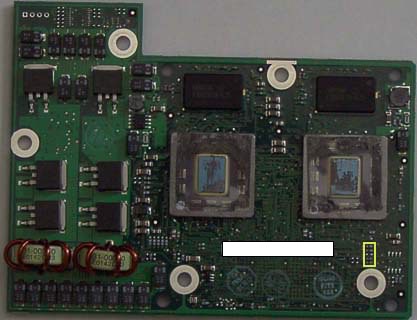
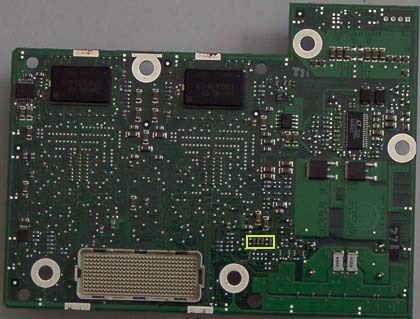
I recently purchased a Dual Processor Quicksilver G4 running at 1000 MHz, and just finished accelerating it to 1200 MHz. Instructions, observations, and benchmarks follow.
This is the base configuration machine with 256 Megs of CL3 memory. All benchmarks were run under Mac OS 9.2.2 with virtual memory off, running all the 9.2.2 extensions, but no others. The monitor used for testing was an Apple 20" Multiscan (Trinitron CRT) set to 640 x 480 at 60 Hz with 256 colors with the default GeForce4 MX card.
Pictures of the top and bottom of the 1000 MHz G4 daughtercard are shown below with the areas of interest highlighted in yellow.


The MPC7455 has an onchip PLL configured by a set of resistors on the daughtercard (boxed in yellow in the pictures) that controls the bus:proceessor ratio. The bus speed is 133 MHz, and the default bus:processor ratio is 7.5x to give a processor speed of 1000 MHz. I first increased the ratio to 8x for a 7 % speed increase to 1066 MHz. Having observed no problems, I then increased the ratio to 9x for a 20 % speed increase to 1200 MHz. I have not yet tried the 10x ratio with a potential 33 % speed increase to 1330 MHz.
There are two sets of these resistors; each set controls one processor. The resistors are CFG_EXT and CFG_PLL[0:3]. The following table outlines the presence (0) and absence (1) of the 1k Ohm (102) resistors on the pads on the daughtercard for the relevant configurations.
|
Bus:Processor Ratio |
Speed (MHz) |
PLL_EXT |
PLL_CFG[0] |
PLL_CFG[1] |
PLL_CFG[2] |
PLL_CFG[3] |
|
7.5x (norm) |
1000 |
0 |
0 |
0 |
0 |
1 |
|
8x |
1066 |
0 |
1 |
1 |
0 |
0 |
|
9x |
1200 |
1 |
0 |
1 |
1 |
1 |
|
10x |
1330 |
1 |
1 |
0 |
1 |
0 |
There are no markings on the motherboard, so the figure below of the top of the daughtercard contains the necessary labels to the right of the pads. This is an image of the board after it was configured for the 1200 MHz configuration.
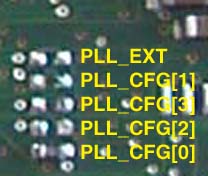
The figure below of the bottom of the daughtercard contains the necessary labels to the right of the pads. This is an image of the board after it was configured for the 1200 MHz configuration.
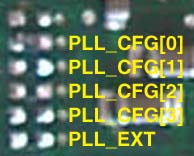
Take a look at Apple System Profiler; it should show 1200 MHz under the System Profile in the Hardware Overview section as shown below for both OS9 and OSX respectively.


MacBench 5 clearly shows a 20 % speedup with the modification to 1200 MHz.

Cinebench 2000 also shows a 20 % increase.

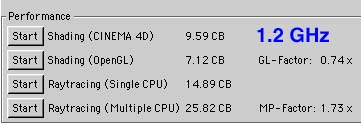
I received a copy of TestbenchX after performing the modification, so I only have data for my machine on the 1.2 GHz configuration, but I also have 1 GHz info from a fellow Mac user.
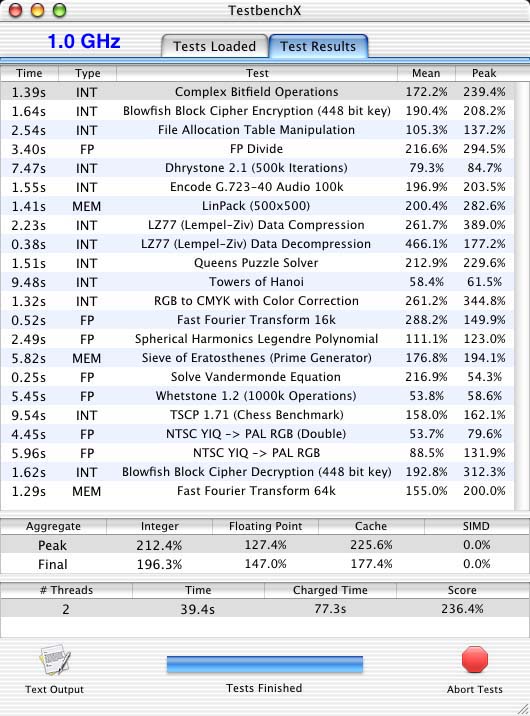
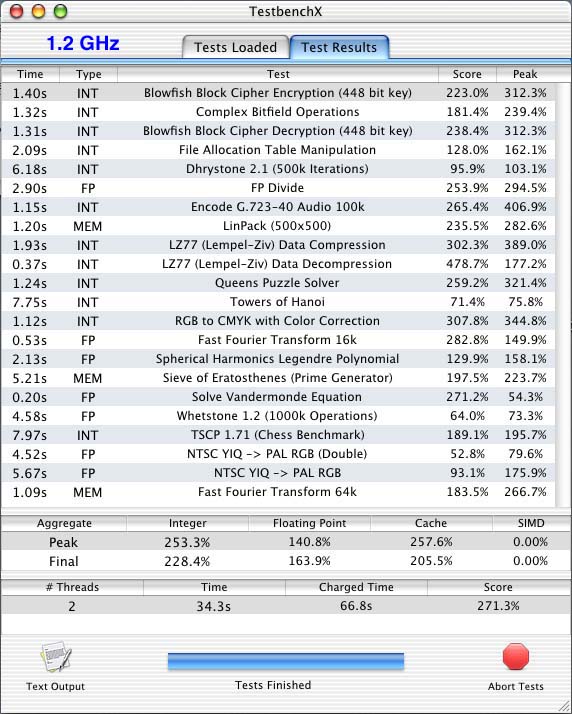
I received a copy of POV-Ray 3.1g.r2 after performing the modification, so I only have data on my machine for the 1.2 GHz configuration. Apparently the OS 9 version only uses a single processor. A fellow Mac user is looking into porting the linux application so we can give it a spin.
The Mac PPC RC5 client running under MacOS 9.2.2 crunches 25.4 million nodes/second after the 1.2 GHz modification.
The Mac PPC/OS X RC5 client running under MacOS X 10.1.3 (SQ45) crunches 27.3 million nodes/second after the 1.2 GHz modification.
The 20 Photoshop 6 Actions on the Bare Feats web page took 40 seconds under OS 9.2.2 and 38 seconds under OSX. Conditions: 1024 x 768, 85 Hz, millions of colors, 200 megs of memory allocated to Photoshop, VM off, FS off, tested on a fresh restart.